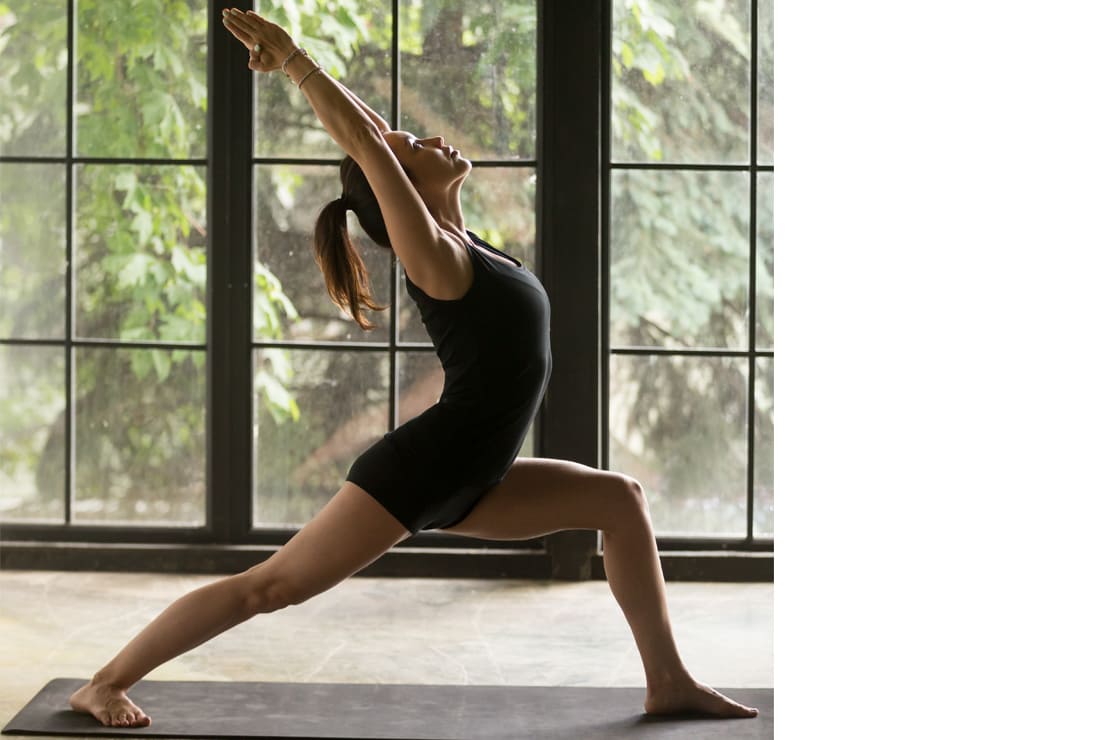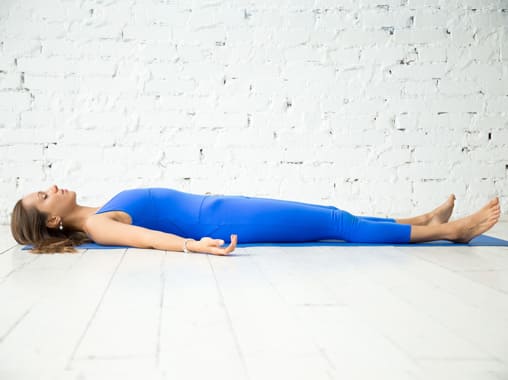Virabhadrasana, commonly known as the Warrior Pose, is one of the most iconic and powerful postures in yoga. Derived from the Sanskrit words ‘Vira,’ meaning hero or warrior, and ‘Bhadra,’ meaning friend or auspicious, this asana embodies strength, courage, and discipline. Named after the mythical warrior Virabhadra, an incarnation of Lord Shiva, this pose not only challenges your physical endurance but also cultivates mental focus and resilience.
The Warrior Pose is not a singular asana but a series of three poses – Virabhadrasana I, II, and III. Each variation offers unique physical and mental benefits, making them a staple in many yoga sequences. In this article, we will delve into the detailed steps of performing each version of the Warrior Pose, along with their respective benefits.

How to Perform Virabhadrasana I (Warrior I Pose)
Step-by-Step Instructions:
- Start in Tadasana (Mountain Pose): Stand tall with your feet together, arms by your sides, and distribute your weight evenly across both feet.
- Step Your Feet Apart: Inhale and step your left foot back about 3 to 4 feet, depending on your flexibility and height. Ensure that your right foot is facing forward, while your left foot is turned out at a 45-degree angle.
- Align Your Hips: Square your hips to face the front of the mat. This might require you to adjust your back foot slightly. Your shoulders should also be aligned with your hips.
- Bend Your Front Knee: Exhale and bend your right knee so that it is directly above your ankle, forming a 90-degree angle. Ensure that your left leg stays straight and strong.
- Raise Your Arms: Inhale and raise your arms overhead, with your palms facing each other. Reach up through your fingertips, keeping your shoulders relaxed.
- Hold the Pose: Gaze forward or slightly upward, holding the pose for 5 to 10 breaths. Focus on grounding through your feet and lifting through your chest and arms.
- Release the Pose: To release, exhale, straighten your front leg, and step back to Tadasana. Repeat on the other side.
How to Perform Virabhadrasana II (Warrior II Pose)
Step-by-Step Instructions:
- Begin in Tadasana: As in Warrior I, start in Mountain Pose, standing tall with your feet together.
- Step Your Feet Apart: Inhale and step your feet 3 to 4 feet apart. Turn your right foot out 90 degrees, so it faces the front of the mat. Turn your left foot slightly inward.
- Position Your Heels for Balance: Align your front heel with the arch of your back foot for optimal stability and control.
- Extend Your Arms: Inhale and extend your arms out to the sides, parallel to the floor, with your palms facing down.
- Bend Your Front Knee: Exhale and bend your right knee over your ankle, creating a 90-degree angle. Ensure that your left leg stays straight and strong.
- Gaze Forward: Turn your head to gaze over your right hand, keeping your spine long and your shoulders relaxed.
- Hold the Pose: Stay in Warrior II for 5 to 10 breaths, focusing on the strength and stability in your legs and the openness in your chest.
- Release the Pose: To release, inhale, straighten your front leg, and return to Tadasana. Repeat on the other side.
How to Perform Virabhadrasana III (Warrior III Pose)/h2>
Step-by-Step Instructions:
- Start in Tadasana: As with the previous poses, begin in Mountain Pose.
- Shift Your Weight: Inhale and shift your weight onto your right foot.
- Extend Your Arms: Exhale and extend your arms forward, parallel to the floor, as you simultaneously lift your left leg behind you.
- Align Your Body: Your body should form a straight line from your fingertips to your left heel. Engage your core to maintain balance.
- Square Your Hips: Keep your hips level and squared to the mat, avoiding the temptation to open them to the side.
- Hold the Pose: Hold Warrior III for 5 to 10 breaths, focusing on balance and stability.
- Release the Pose: To release, slowly lower your left leg back to the floor and return to Tadasana. Repeat on the other side.
Benefits of Virabhadrasana
- Strengthens the Legs and Core: All three variations of the Warrior Pose are excellent for building strength in the legs, particularly the quadriceps, hamstrings, and calves. The poses also engage the core muscles, including the abdominals and obliques, essential for maintaining balance and stability.
- Enhances Flexibility: Warrior I and II involve deep lunges, which help open the hips and groin. Over time, these poses can increase flexibility in the hip flexors and hamstrings.
- Improves Balance and Coordination: Warrior III is particularly beneficial for improving balance and coordination. By requiring you to maintain stability on one leg while extending the other, this poses challenges to your proprioception and enhances your overall sense of body awareness.
- Promotes Mental Focus: The Warrior Poses demand concentration and focus, making them excellent for cultivating mindfulness. Holding these postures while maintaining steady breathing helps to quiet the mind and improve mental clarity.
- Boosts Stamina and Endurance: Practicing the Warrior Poses regularly can increase your stamina and endurance. These poses require sustained effort, which helps to build cardiovascular and muscular endurance over time.
- Relieves Stress and Anxiety: The powerful stance of the Warrior Poses can evoke feelings of confidence and empowerment. Engaging in these postures can help to alleviate stress and anxiety, promoting a sense of inner strength and calm.
- Opens the Chest and Shoulders: Warrior I and II involve lifting and extending the arms, which helps to open the chest and shoulders. This can improve posture and counteract the effects of sitting for long periods.
Conclusion
Virabhadrasana, or the Warrior Pose, is a fundamental part of yoga practice, offering many physical and mental benefits. Whether you’re looking to build strength, enhance flexibility, or cultivate mental focus, the Warrior Poses provide a comprehensive workout for both body and mind. By incorporating these asanas into your regular practice, you can develop the resilience, balance, and inner calm that are the hallmarks of a true warrior.





